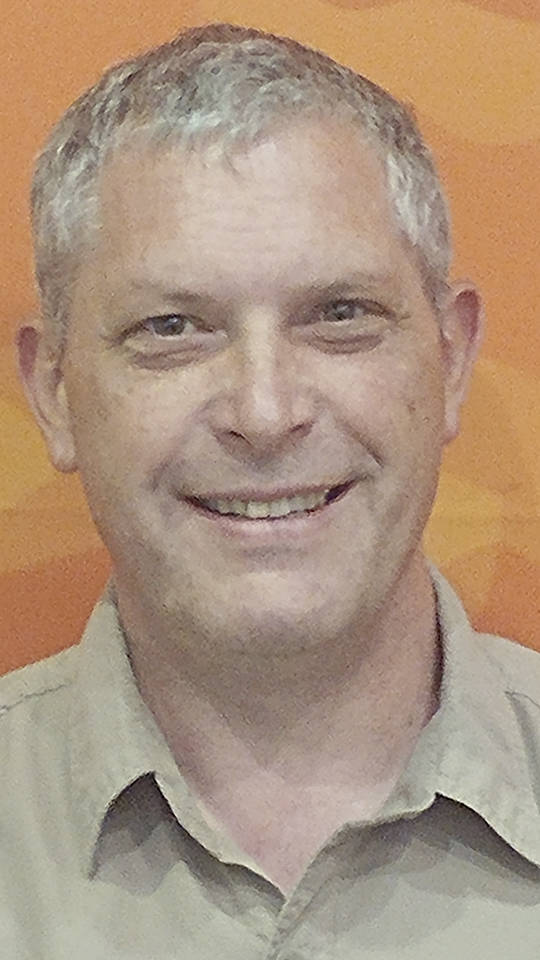Name: Richard Thompson
Occupation: Critical Care Nurse
Relevant experience: Have worked in healthcare for 29 years as a nurse in: psychiatric, pediatric ER, adult critical care, manager. Worked at GH Community Hospital from November 2017 to March 2019. Volunteer for Firefighter District 7, In the past served on Key Peninsula Community Council Board of Directors (elected) focus on Health subcommittee and Pierce County Nurses Association Board of Directors (elected).
1. Grays Harbor Community Hospital serves a population that often ranks high in terms of chronic health problems and has a high percentage of patients who pay with government-backed insurance. On top of that, recruitment of health professionals has been a long-time problem. Given those conditions, what actions can the board take to overcome those obstacles?
The aforementioned issues have been and are the reality of the area. Actions that the district board needs to take: 1) stop viewing these as obstacles and using it as an excuse instead of identifying and fixing broken processes, waste and inefficiencies. 2) Inform the public: The district may not get reimbursed for the amount it costs to provide care but that DOES NOT translate to increased cost or billing to the patient on Medicare or Medicaid copayment/coinsurance (largest subset seeking care out of our area). This is a frequent misconception I hear when talking with the public. 3) Establish wellness and chronic disease management centers that focus on informing, educating, managing and the prevention of chronic diseases. It is estimated that almost 60 % of health care dollars are spent on chronic diseases. 4) Ensure programs exist and are accessible to schools, senior centers, food banks, volunteer community services, etc that provide education and support on health management. 5) Recruitment strategies of professionals need to focus on highlighting the quality of life, workers, and work environment to be appealing to new providers. 6) Determine partnerships that exist or explore new opportunities with other healthcare systems. 7) Show the community and the public that the board is serious about making change and submit resolution to terminate the current CEO in effort to regain public and provider trust.
2. What are your ideas for a strategy that will put the hospital on better financial ground?
1) Sadly the first step that needs to be taken is to immediately have a class on hospital finance for the entire board. We cannot have a board which is ignorant of the meaning of the data being provided and expect it to make “informed” decisions on our behalf. 2) We need to look at the report from Navigant (the consulting company we paid over 3 million dollars to evaluate our process at the direction of an outside entity as a means of avoiding foreclosure) to determine what further steps we should be taking/continue taking. 3) Evaluate all arms of district business to determine if it makes business and community health sense to continue nonproductive aspects 4) Continue the work focusing on improving inpatient quality metrics of the hospital 5) Ensure that the district is providing appropriate pay and benefits to encourage retention and recruitment of quality staff. 6) Evaluate all physical plant sites and cost of maintenance and determine feasibility of maintenance and retention. 7) Evaluate need for enhanced and improved electronic health record for better capture of care charges, physician recruitment, patient communication.
3. In terms of priorities, what direction would you, as a commissioner, give the hospital administration?
This is not any easy answer as I do not believe the public or the current board understand the true state of the district and its financial standing. I will answer with the knowledge that based on steps taken in the above question these priorities may shift and dramatically change. In the immediate period the district needs to: 1) Identify and implement further strategies that reduce waste and inefficiency in the clinics to minimize cost of care. The goal of which is to enable the district to not depend on rural health clinic designation for reimbursement that limits the number of beds that the hospital can utilize. The hospital can then recruit physician services that can use inpatient beds and not have patients coming into the ER being transferred to hospitals out of area for basic care. 2) The hospital needs to continue to work on process improvements in the ER to reduce times to acceptable times. 3) Create internal processes as well as looking into the feasibility of providing a free nurse triage line to all residents that can help direct patients to the appropriate care — whether that be providing care over the phone, a same day visit with an immediate care provider in a clinic, an appointment with their provider in a week or direct to the ER for care. 4) The establishment and enhancement of more robust preventative maintenance and chronic disease management teams needs to occur immediately. This is a lifelong journey for all of us, and the hospital district must work within the community to ensure healthy behaviors are being taught, encouraged, reinforced at all stratums of society. 5) Explore the recruitment and support of home physicians and advanced practice providers to provide care to our homebound patients. 6) Recruit physicians and providers that will see patients at non-traditional hours e.g before 7 a.m. and after 5 p.m. This will allow patients and families to not have to miss time at work to seek routine healthcare which typically means lost wages. 7) Investigate feasibility and implement mobile and micro offices of physician and support services that can be deployed to rural areas to provide basic care e.g. mobile lab, x-ray, check up, follow up and education services.


